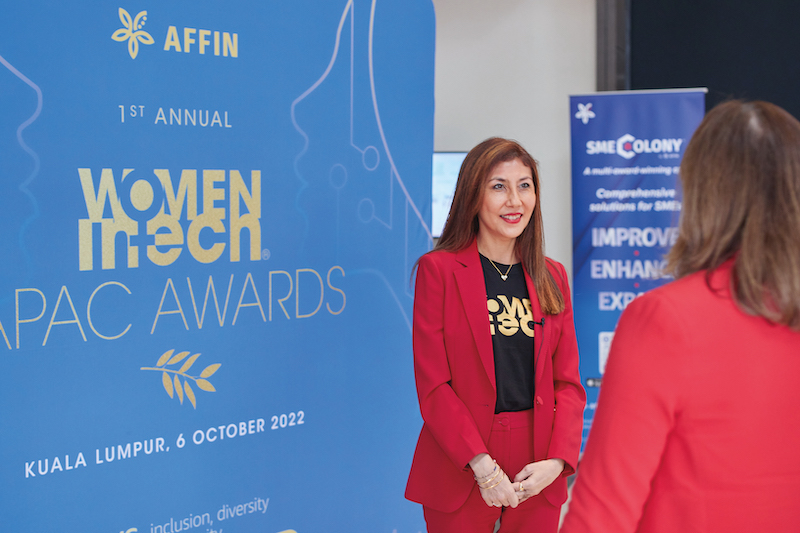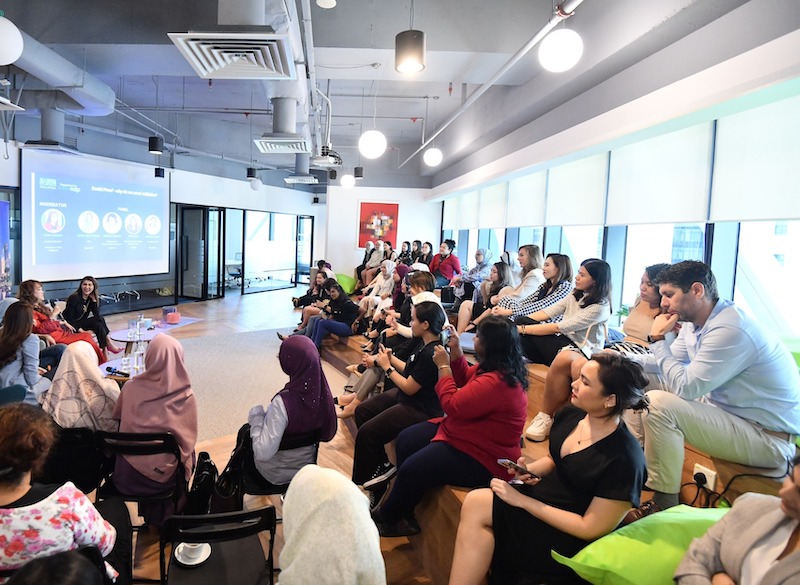
The insular culture of tech prevents women from climbing the next rungs of the corporate ladder (Photo: Reuters)
The technology industry’s most powerful elites are embracing a new tone. A turnaround from just a few years ago, when the field was put on its heels by exposés about its “bro” culture, top leaders are making an effort to dismantle a systemic bias long perpetuated by a few white men. But if such transformation has truly materialised, why have the diversity numbers in the industry barely budged?
More broadly, why have women not made notable traction recently in the most senior echelons of, say, Apple, Twitter and Meta, where the corridors of power continue to be dominated by their male counterparts? That is because even after the glass ceiling yields, the insular culture of tech prevents them from climbing the next rungs of the corporate ladder.
A gander at women in tech: Malaysia, at 35%, is doing slightly better than the US, which has been struggling to go beyond the 25% mark as female staff are leaving the workforce at twice the rate of men. Numerous studies drew an unfavourable conclusion. Data shows that women are evaluated on their personalities in a way men are not, and in a cruel irony, their contributions to open-source software and business pitches are accepted more often than men’s, but only if their gender is unknown. Structural discrimination is insidious and can deter those who do not fit the mould.
But are government bodies and big corporations doing enough to further the female presence in the local tech scene? Yuki Aizawa, country director of non-governmental organisation Women in Tech (WIT) Global Movement for the Malaysian chapter, believes the nation is heading in a positive direction.
“It used to be an uphill challenge a decade ago, not just in the tech industry but in general. However, with a greater global focus on environmental, social and governance (ESG) and diversity, equity and inclusion (DEI) in the workplace, the government is supporting measures like female board member placement quotas in the same way the 30% Club is improving diversity on Malaysian corporate boards and senior management. Hence, we are riding this timely trend to make sure all stakeholders are in place and in sync.”
yuki_aizawa.jpg

WIT was launched locally in February last year with a clear mission to empower five million women and girls by 2030, from the classroom to the boardroom, through advocacy, education, business and digital inclusion. But entrenched gender parity and mounting cultural stereotypes are hindering progress. From young, girls are indoctrinated to believe they should be feminine as well as modest about their abilities, and that STEM (science, technology, engineering and mathematics) fields, especially in Silicon Valley, are made up of socially isolated young men whose genius is the result of genetics rather than hard work. A leaky educational pipeline as well as a homogenous employee make-up in the corporate world account for the dearth of women in schools and the C-suite respectively.
Making gains for women in STEM subjects will take more effort as it starts from an early age. “One of the main reasons they are held back is the lack of role models. The mind shift [to encourage girls to be in STEM] has to happen at home or school. The huge force and sudden shift of focus during the pandemic show the importance of digitalisation and how it aligns with the national goal of making Malaysia an Asean digital hub.
"If we empower women with digital skills and tools, they can greatly contribute to the micro, small and medium enterprise (MSME) sector, as these companies are the key economic drivers in the country. More women participation in any industry leads to better decision-making, improved stakeholder management and strengthened entity resilience,” asserts Aizawa, who is also an official signatory of Women Empowerment Principles by UN Women.
wit.jpeg

Tech titans thrive on a meritocracy system to foster a culture of excellence but subliminal biases shape the way they hire and promote. To reduce the high rate of attrition among women in a rigorously demanding profession, WIT has partnered with government agencies such as the Malaysian Research Accelerator for Technology & Innovation (MRANTI), Sabah Creative Economy and Innovation Centre (Scenic) and Malaysia Digital Economy Corporation (MDEC) to push for pay transparency, equal career opportunities and better welfare to support women in balancing work and caregiving responsibilities. The NGO has more than 300,000 members so far who benefit from WIT’s platform that provides them with mentoring, venture building and crowdfunding, among others.
No shortage of ink has been spilled about the underrepresentation of women in leadership roles. But the conversation on diversity in tech — not just gender but also ethnicity — is also one about social change, economic inequality, access to education and the latent sexism of an industry that prides itself on building the future. Not to be ignored also is a new criterion that eclipses other prevailing obstacles that thwart female advancement: visibility. If the tech industry can connect the world and build self-driving cars and rockets to Mars, surely it can fund initiatives to create more room for others at the decision-making table.
Girls get tech. They just need others to believe it.
This article first appeared on Mar 6, 2023 in The Edge Malaysia.


